Safe Infant Sleep Information For Parents
As a parent or caregiver, you can take steps to create a safe sleep environment for your baby. When you put your baby "safe to sleep" for every sleep, you reduce the risk of sudden unexpected infant death (SUID). The steps below can help keep your baby safe during sleep and in the sleep environment.
What You Can Do to Reduce the Risk of Sudden Unexpected Infant Death:
- Always place baby on their back to sleep, for naptime and nighttime.
- Use a firm and flat sleep surface, covered by a tightly, fitted sheet.
- Do not let your baby sleep in an adult bed, on a couch, or on a chair alone, with you, or with anyone else.
- Room sharing—keeping baby's sleep area in the same room where you sleep—reduces the risk of SUID.
- If you bring baby into your bed to feed, put them back in a separate sleep area in your room, such as a safety-approved crib, bassinet, or portable play area, when you are finished.
- Keep soft objects including crib bumpers, toys, and loose bedding out of baby's sleep area.
- Get regular healthcare during pregnancy.
- Do not smoke, drink alcohol, or use cannabis or illegal drugs during pregnancy or after the baby is born. Do not allow smoking of any kind around your baby.
- Breastfeed your baby.
- Once breastfeeding is firmly established, give your baby a dry pacifier that is not attached to a string for naptime and nighttime.
- Do not let your baby get too hot during sleep.
- Follow healthcare professional guidance on baby's vaccines and regular health checkups.
- Avoid products that claim to reduce the risk of SUID and other sleep-related causes of infant death.
- Do not use home heart or breathing monitors to reduce the risk of SUID.
- Give baby plenty of supervised "tummy time" when they are awake. Tummy time helps baby's head, neck, and shoulder muscles get stronger and helps prevent flat spots on the head.
- Spread the word. Tell grandparents, babysitters, child care providers, and other caregivers to always place your baby on his or her back to sleep to reduce the risk of SIDS. Babies who usually sleep on their backs but who are then placed on their stomachs, even for a nap, are at very high risk for SIDS—so every sleep time counts.
- Consider requesting a free, confidential home visit to ask questions and get help setting up a safe sleep environment.
What We Do
- Conduct free, confidential home visits for pregnant women and families with children up to age three. Family visitors can help you set up a safe sleep environment for your baby.
- Provide breastfeeding support for eligible women through the Women, Infants, and Children (WIC) Program.
- Offer support to help people quit smoking.
- Partner with healthcare professionals, birthing hospitals, child care providers, social service providers, home visitors, and community-based organizations to promote safe sleep practices.
- Convene a statewide team of experts to review all child deaths cases and to identify ways to prevent similar deaths from occurring.
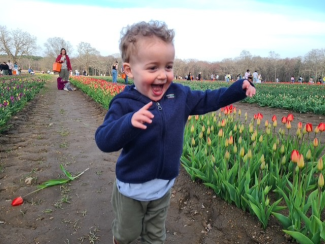
Meet Owen and read his #SafeSleepStory
"Ellie couldn’t wait to meet her baby brother, and when Owen arrived she was eager to help us take care of him. Ellie was a toddler when Owen was born, and her idea of helping was to make sure he was surrounded at all times by his toys, stuffed animals, and blankets. Although we kept explaining that it was important that Owen sleep alone, Ellie was intent that her baby brother not be lonely. I can’t remember how many times we had to remove the toys and blankets out of the Pack ‘n’ Play and crib before putting Owen to sleep. Today, Owen is a toddler and Ellie is going into first grade. We’re past the safe sleep stage and working on keeping Owen from climbing out of his toddler bed. Safety first!" - Sidra, parent
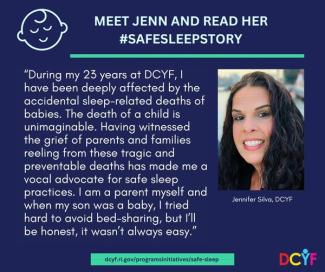
Meet Jenn and read her #SafeSleepStory
During my 23 years at DCYF, I have been deeply affected by the accidental sleep-related deaths of babies. The death of a child is unimaginable. Having witnessed the grief of parents and families reeling from these tragic and preventable deaths has made me a vocal advocate for safe sleep practices. I am a parent myself and when my son was a baby, I tried hard to avoid bed-sharing, but I'll be honest, it wasn't always easy. - Jenn, parent and DCYF employee
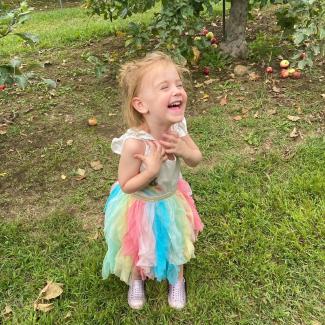
Meet Ellie and read her #SafeSleepStory
We were new parents and didn’t know what to expect. We had heard that the newborn stage can be challenging. We followed the “share a room, not a bed” guidance, keeping Ellie in her bassinet in our room for the first few months. When we transitioned her to a crib in her room, everyone’s sleeping improved dramatically. We did the best we could as first-time parents, and we were lucky to have the support of family and friends. Ellie is three now and thriving and sassy as ever. -Sidra, parent
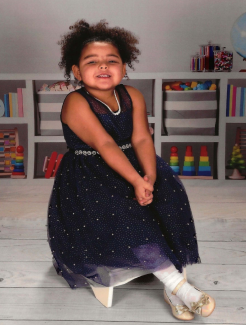
Meet A’Kirah and read her #SafeSleepStory
My child A'Kirah is now 4 years old, but when she was a baby I did my best to practice safe sleep. It wasn’t always easy; A'Kirah was colicky and we struggled with getting her to fall asleep and stay asleep without being held. I struggled with trying not to co-sleep. Our pediatrician suggested we swaddle her with a safe sleep swaddler. I found that using the safe sleep swaddler and putting her on her back, in her crib, and without any blankets worked! Not only was she finally able to fall asleep without being held, she slept safely for longer periods of time. - Tiffaine, parent
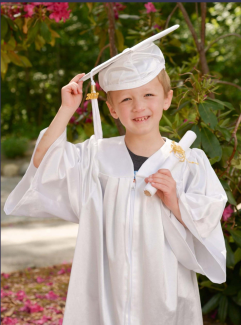
Meet Jack and read his #SafeSleepStory
Jack had acid reflux as a baby and was up at night very often and always wanted to be held. I knew the importance of safe sleep, and knew I needed to stay awake when I was up with him in the middle of the night. So, I developed strategies to stay awake. This included texting with my mom friends in the middle of the night while I was breastfeeding, and leaning on my husband, who was always willing to do middle of the night diaper changes. I also caught up on my favorite shows and social media feed while breastfeeding at night. We did not bed share and always placed Jack to sleep on his back. - Ashley, parent
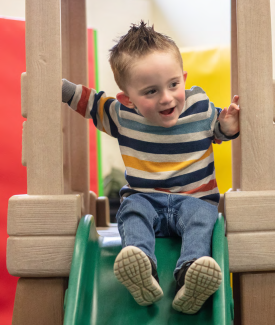
Meet Aiden and read his #SafeSleepStory
My child Aiden is now 3 years old. When he was born, he spent 59 days in the newborn intensive care unit (NICU). The hospital taught us all the best sleep practices. We were so nervous to have him home, but we did our best to practice safe sleep. It wasn’t easy, but we always put him to sleep on his back and in his crib, and a great baby monitor helped us keep an eye on him while he slept. Aiden had reflux, and sometimes it was difficult for him to sleep, so we kept in touch with our pediatrician to make sure whatever we were doing aligned with Aiden sleeping safely. It was sometimes emotionally draining, but now Aiden has great sleep habits, which is helpful now that he has a little sister. - Laura, South Kingstown
Prevent Sleep-related Infant Deaths
Safe Sleep v4
Safe Sleep for Infants
New Safe Sleep Recommendations to Protect Against SIDS video
More
Resources
- The Science Behind Safe Infant Sleep (Podcast)
- Safe Sleep Awareness Campaign
- Safe Sleep Awareness Social Media Campaign
- Safe to Sleep
- SIDS & Other Sleep-Related Infant Deaths: Expansion of Recommendations for a Safe Infant Sleeping Environment Technical Policy Statement
- Healthy moms and babies
Flyers
Posters
News
- April 6, 2025: Co-Sleeping, No Matter Where, Raises the Risk of Sudden Infant Death, Data Show
- October 10, 2024: Fisher-Price Recalls More than 2 Million Snuga Infant Swings Due to Suffocation Hazard After 5 Deaths Reported | CPSC.gov
- August 6, 2024: U.S. lawmakers propose a ban on weighted infant sleepwear : NPR
- March 28, 2024: Forias Pack and Play Mattresses Recalled Due to Suffocation Hazard for Infants; Violations of the Federal Safety Regulation for Crib Mattresses; Sold Exclusively on Amazon.com by Forias Direct
- March 7, 2024: Jool Baby Recalls Nova Baby Infant Swings Due to Suffocation Hazard; Violation of the Federal Safety Regulations
- November 2, 2023: Yoocaa Baby Loungers Recalled Due to Suffocation Risk and Fall and Entrapment Hazards
- October 11, 2023: What products can babies safely sleep in?
- June 6, 2023: Newborn deaths prompt federal warning over recalled Boppy baby loungers
- January 9, 2023: 2 rocking sleepers face re-announced recalls after 12 infants die following first recall
- August 16, 2022: Recalls and Warnings: Millions of Baby Swings, Rockers Recalled After Infant Dies
- June 21, 2022: Sleep-Related Infant Deaths: Updated 2022 Recommendations for Reducing Infant Deaths in the Sleep Environment
- June 14, 2022: CPSC and Fisher-Price Warn Consumers About 13 Deaths in Fisher-Price Infant-to-Toddler and Newborn-to-Toddler Rockers: Advise Rockers Should Never Be Used for Sleep
